Abstract
Cockayne syndrome (CS) is a rare recessive genetic disease characterized in part by premature ageing and photosensitive skin. Because of the latter characteristic, this syndrome was considered to be an example of a UV-sensitive DNA repair-defective human disorder. We demonstrated normal levels of UV-induced unscheduled DNA synthesis (UDS) in four unrelated CS patients that show hypersensitivity to both UV and Mitomycin C (MMC). At low UV exposure, CS DNA shows a dose-dependent decrease in size. By contrast, heterozygotes appear to have a threshold below which there is little change in size of single strand DNA. Immediately following UV or MMC treatment, CS DNA is deficient in high molecular weight species, but undergoes a normal transition to larger DNA during a chase interval in the presence or absence of caffeine. This suggests a defect in replication or excision repair and no defect in post-replication repair (PRR). Pulse studies performed in the presence of hydroxyurea (HU) also reveal a deficient production of large DNA, suggesting the defect is in repair. As these cells have normal UDS and normal PRR, the basis for their UV sensitivity must be distinct from that observed in xeroderma pigmentosum (XP).
Full text
PDF
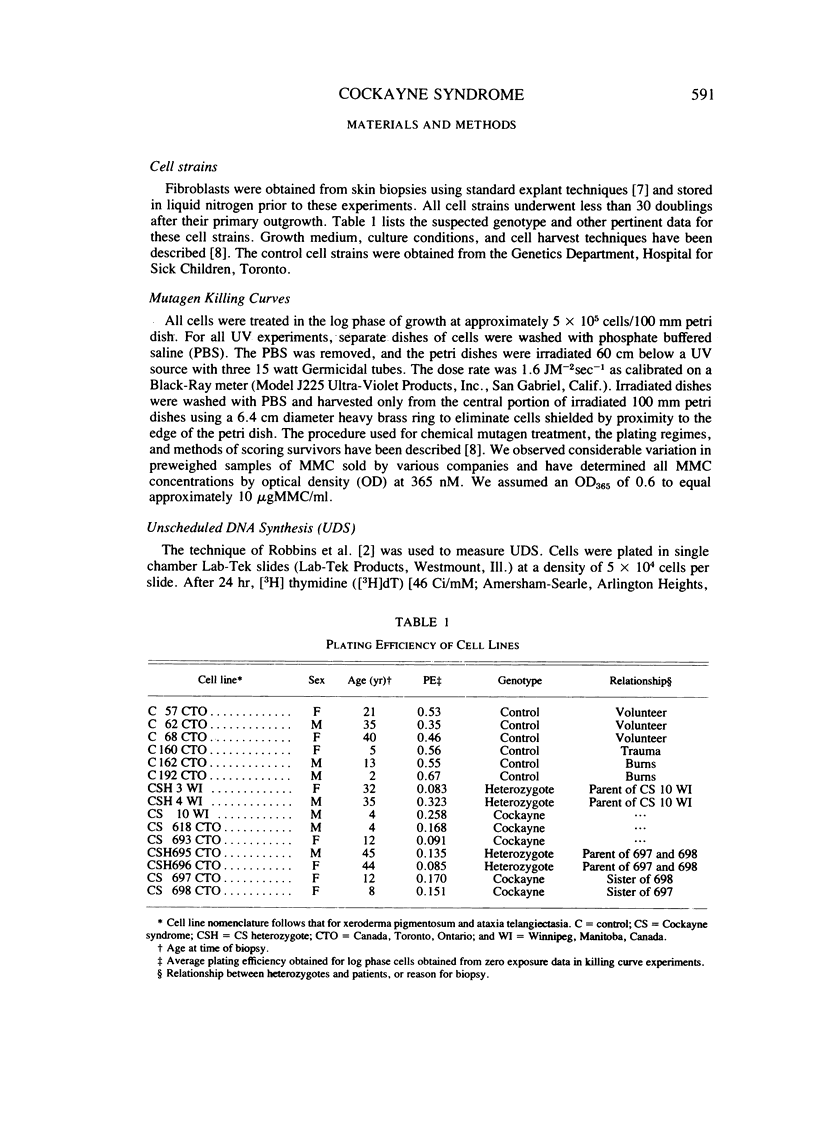
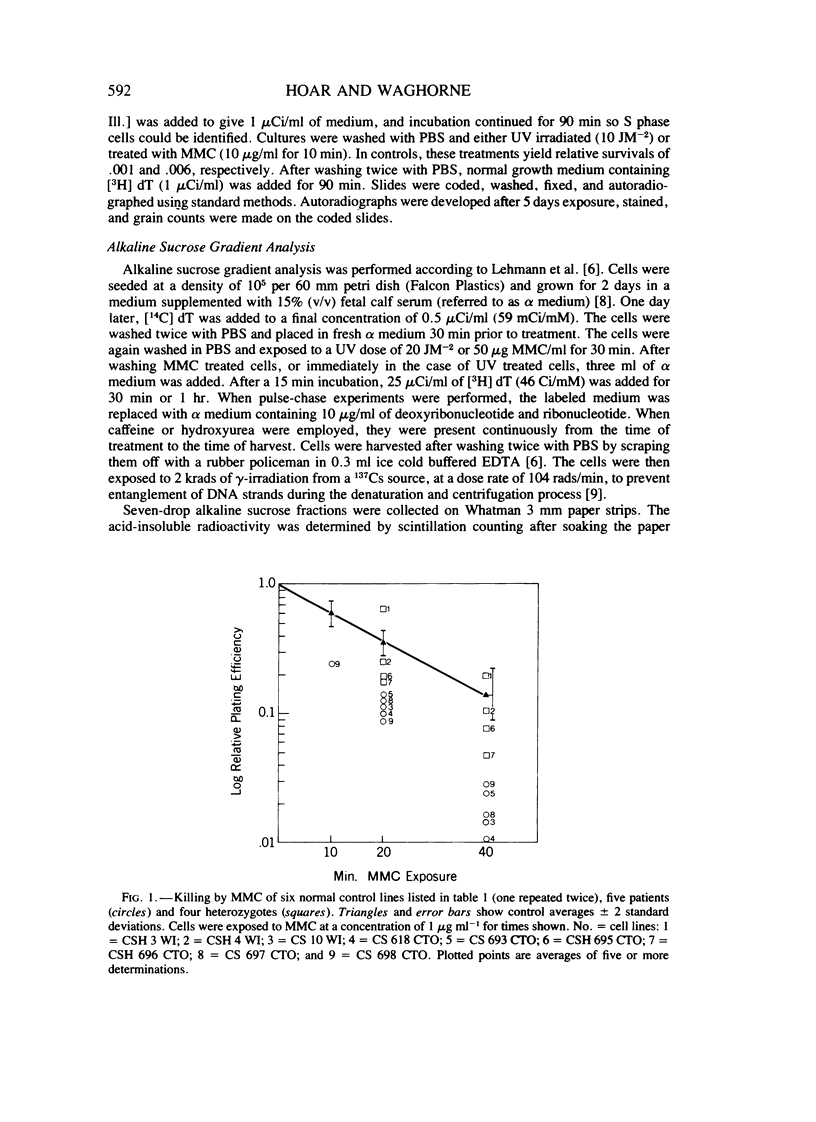
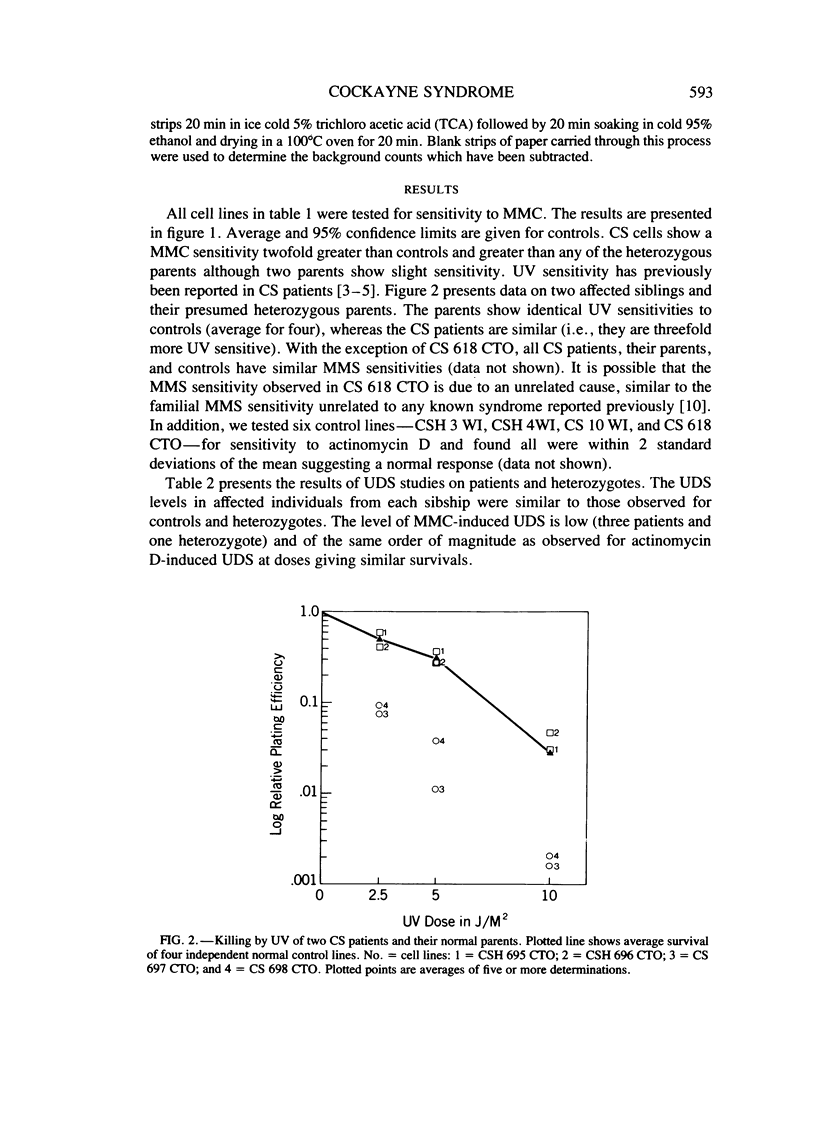
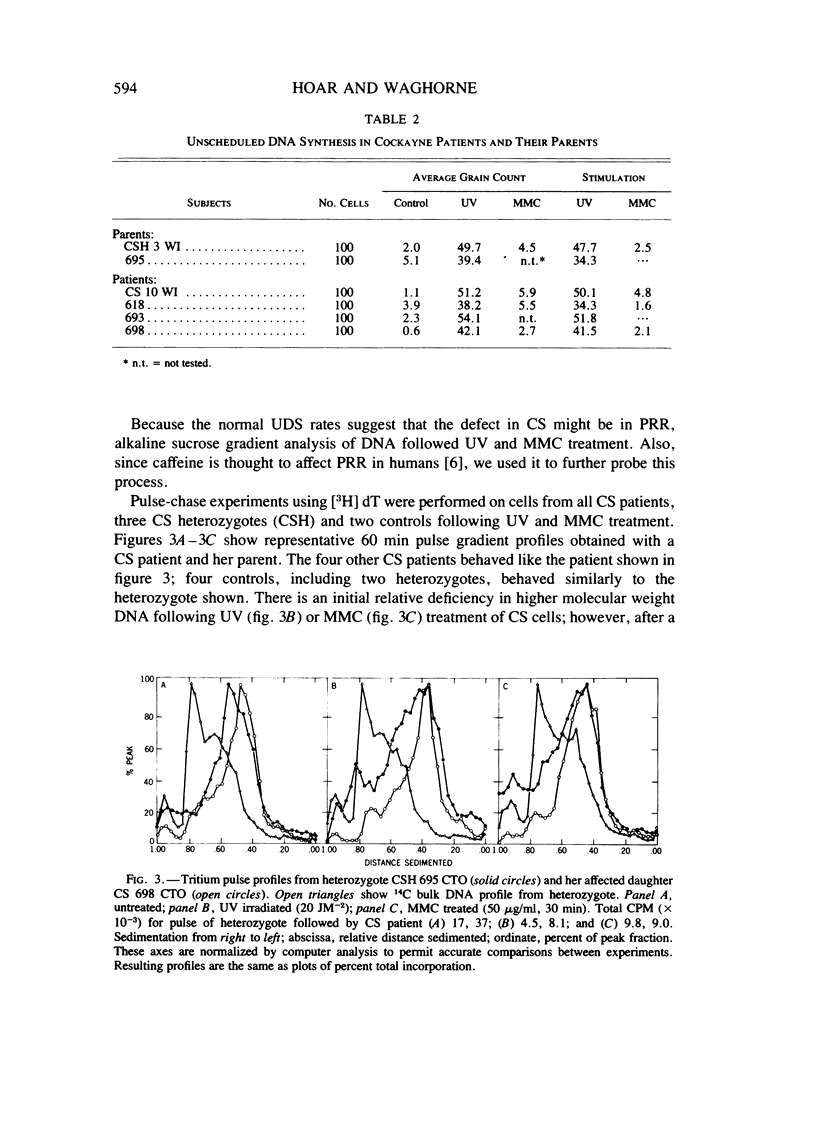
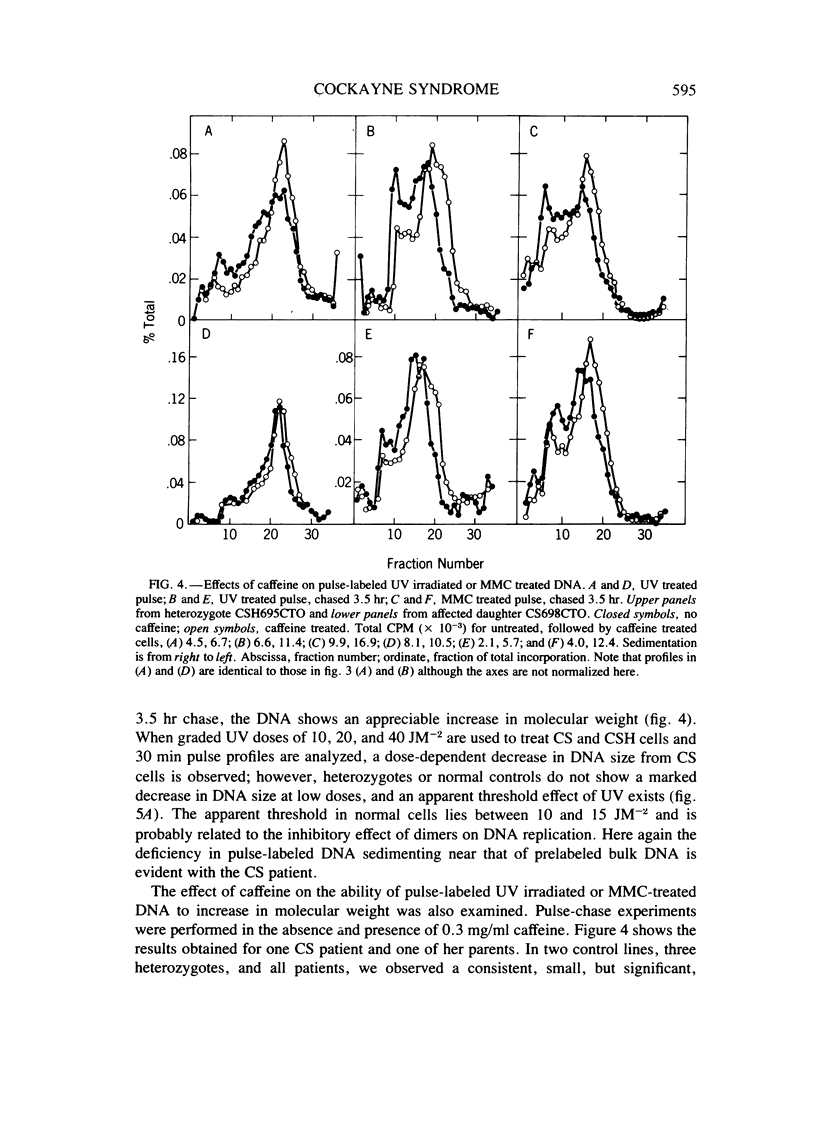
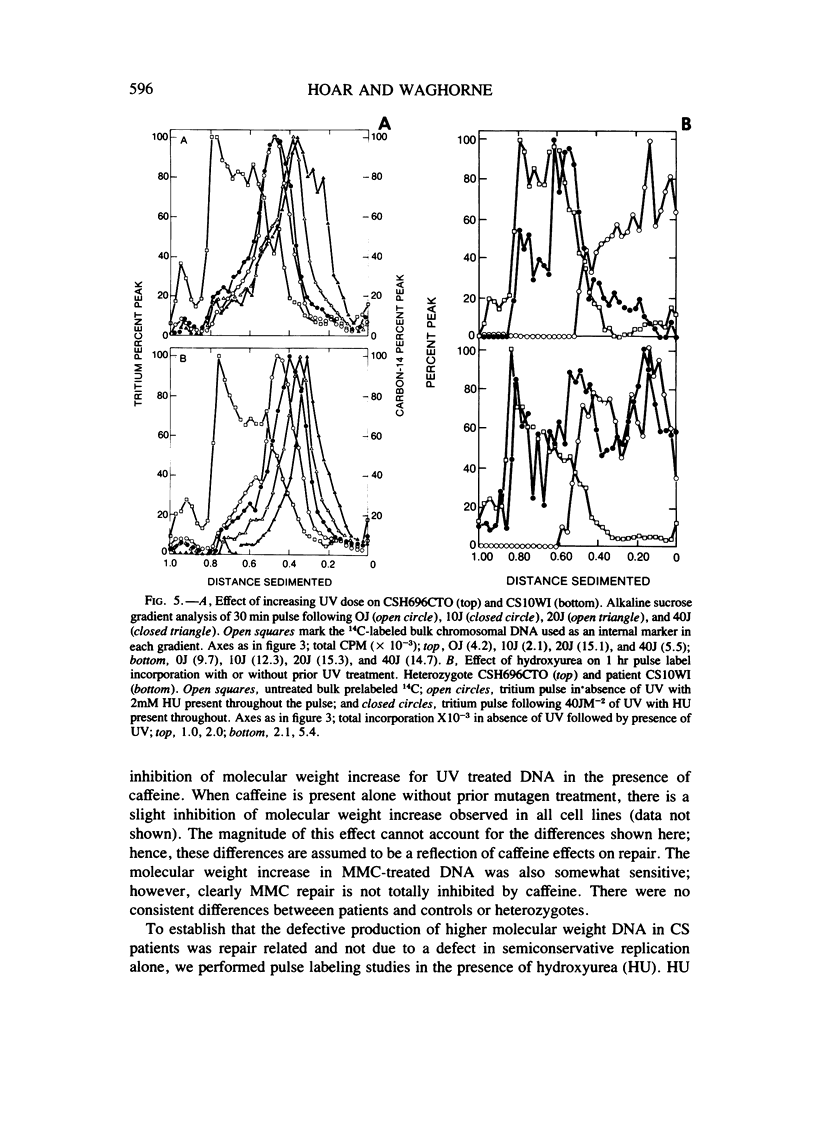
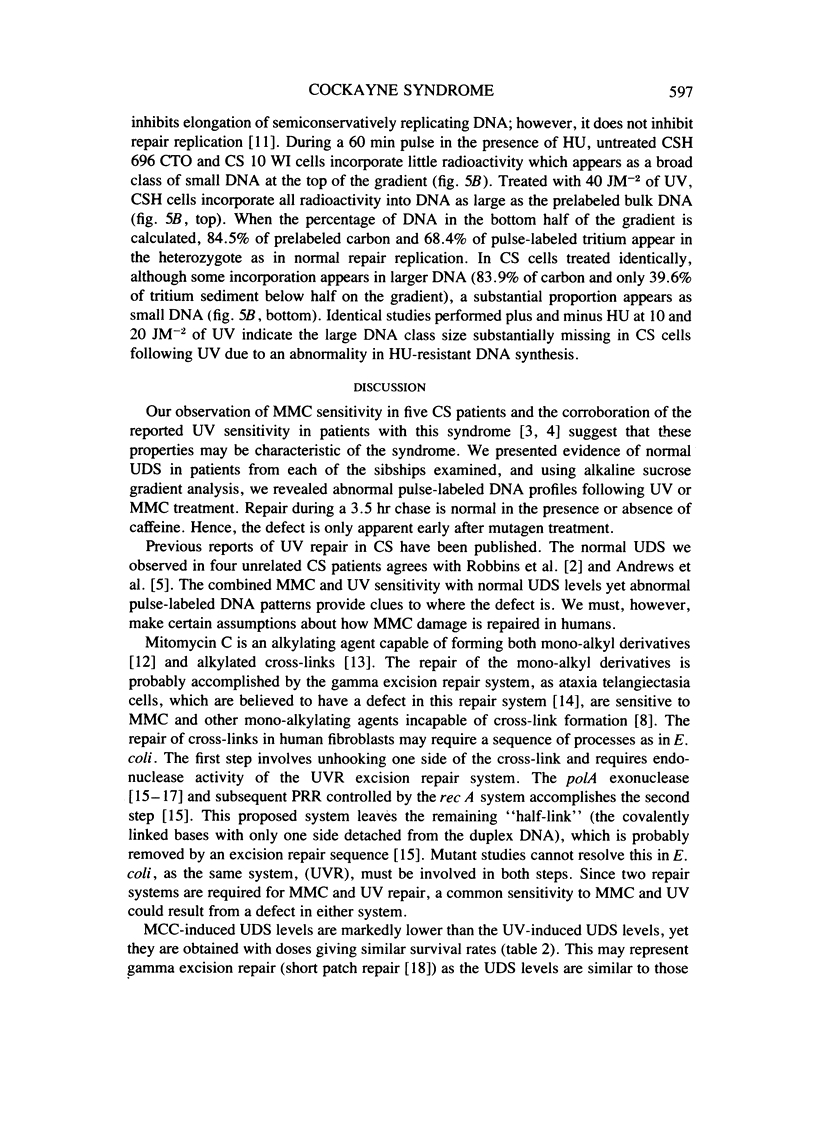
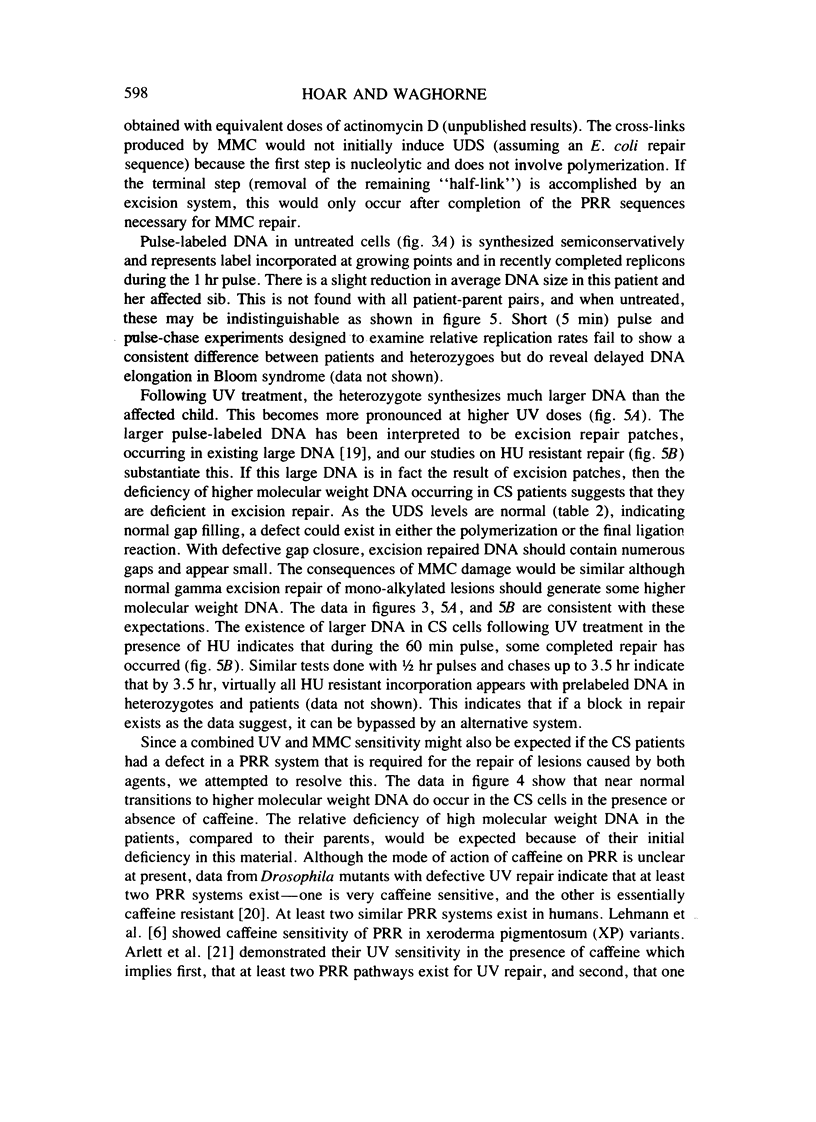
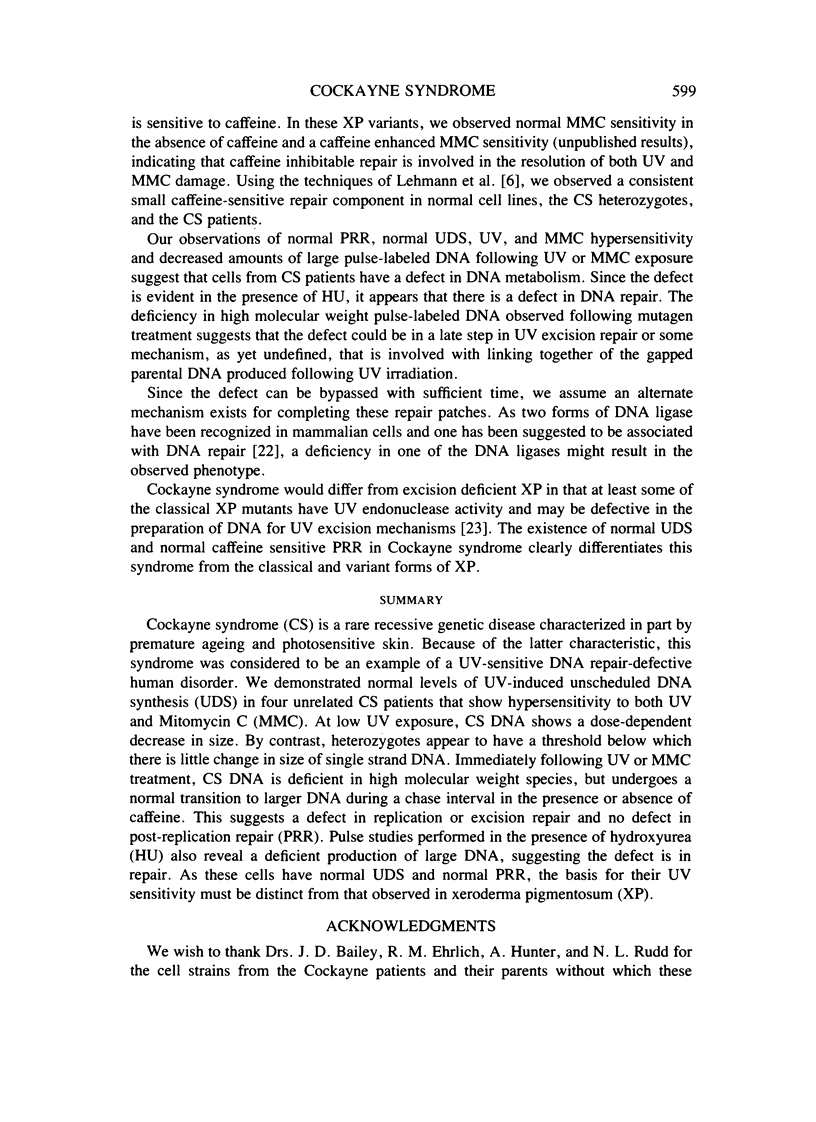
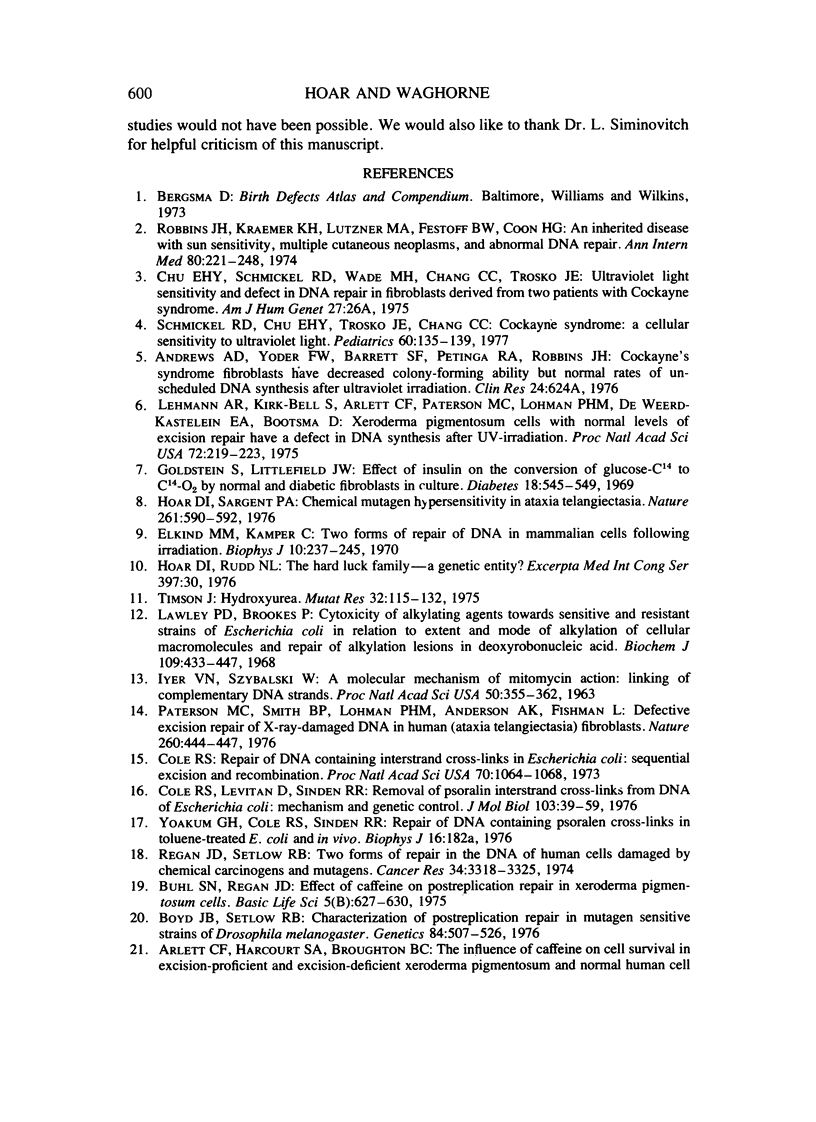
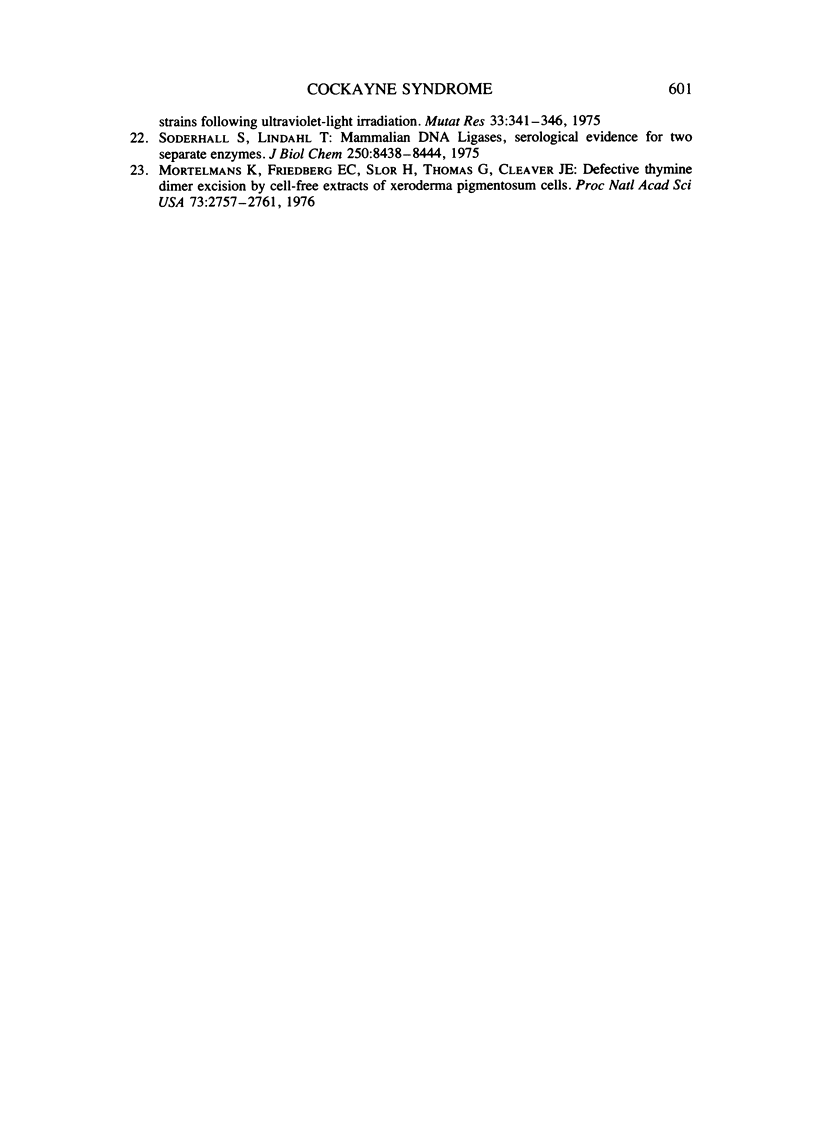
Selected References
These references are in PubMed. This may not be the complete list of references from this article.
- Arlett C. F., Harcourt S. A., Broughton B. C. The influence of caffeine on cell survival in excision-proficient and excision-deficient xeroderma pigmentosum and normal human cell strains following ultraviolet-light irradiation. Mutat Res. 1975 Dec;33(2-3):341–346. doi: 10.1016/0027-5107(75)90209-2. [DOI] [PubMed] [Google Scholar]
- Boyd J. B., Setlow R. B. Characterization of postreplication repair in mutagen-sensitive strains of Drosophila melanogaster. Genetics. 1976 Nov;84(3):507–526. doi: 10.1093/genetics/84.3.507. [DOI] [PMC free article] [PubMed] [Google Scholar]
- Buhl S. N., Regan J. D. Effects of caffeine on postreplication repair in xeroderma pigmentosum cells. Basic Life Sci. 1975;5B:627–630. doi: 10.1007/978-1-4684-2898-8_33. [DOI] [PubMed] [Google Scholar]
- Cole R. S., Levitan D., Sinden R. R. Removal of psoralen interstrand cross-links from DNA of Escherichia coli: mechanism and genetic control. J Mol Biol. 1976 May 5;103(1):39–59. doi: 10.1016/0022-2836(76)90051-6. [DOI] [PubMed] [Google Scholar]
- Cole R. S. Repair of DNA containing interstrand crosslinks in Escherichia coli: sequential excision and recombination. Proc Natl Acad Sci U S A. 1973 Apr;70(4):1064–1068. doi: 10.1073/pnas.70.4.1064. [DOI] [PMC free article] [PubMed] [Google Scholar]
- Elkind M. M., Kamper C. Two forms of repair of DNA in mammalian cells following irradiation. Biophys J. 1970 Mar;10(3):237–245. doi: 10.1016/S0006-3495(70)86296-8. [DOI] [PMC free article] [PubMed] [Google Scholar]
- Goldstein S., Littlefield J. W. Effect of insulin on the conversion of glucose-C-14 to C-14-O2 by normal and diabetic fibroblasts in culture. Diabetes. 1969 Aug;18(8):545–549. doi: 10.2337/diab.18.8.545. [DOI] [PubMed] [Google Scholar]
- Hoar D. I., Sargent P. Chemical mutagen hypersensitivity in ataxia telangiectasia. Nature. 1976 Jun 17;261(5561):590–592. doi: 10.1038/261590a0. [DOI] [PubMed] [Google Scholar]
- IYER V. N., SZYBALSKI W. A MOLECULAR MECHANISM OF MITOMYCIN ACTION: LINKING OF COMPLEMENTARY DNA STRANDS. Proc Natl Acad Sci U S A. 1963 Aug;50:355–362. doi: 10.1073/pnas.50.2.355. [DOI] [PMC free article] [PubMed] [Google Scholar]
- Lawley P. D., Brookes P. Cytotoxicity of alkylating agents towards sensitive and resistant strains of Escherichia coli in relation to extent and mode of alkylation of cellular macromolecules and repair of alkylation lesions in deoxyribonucleic acids. Biochem J. 1968 Sep;109(3):433–447. doi: 10.1042/bj1090433. [DOI] [PMC free article] [PubMed] [Google Scholar]
- Lehmann A. R., Kirk-Bell S., Arlett C. F., Paterson M. C., Lohman P. H., de Weerd-Kastelein E. A., Bootsma D. Xeroderma pigmentosum cells with normal levels of excision repair have a defect in DNA synthesis after UV-irradiation. Proc Natl Acad Sci U S A. 1975 Jan;72(1):219–223. doi: 10.1073/pnas.72.1.219. [DOI] [PMC free article] [PubMed] [Google Scholar]
- Mortelmans K., Friedberg E. C., Slor H., Thomas G., Cleaver J. E. Defective thymine dimer excision by cell-free extracts of xeroderma pigmentosum cells. Proc Natl Acad Sci U S A. 1976 Aug;73(8):2757–2761. doi: 10.1073/pnas.73.8.2757. [DOI] [PMC free article] [PubMed] [Google Scholar]
- Paterson M. C., Smith B. P., Lohman P. H., Anderson A. K., Fishman L. Defective excision repair of gamma-ray-damaged DNA in human (ataxia telangiectasia) fibroblasts. Nature. 1976 Apr 1;260(5550):444–447. doi: 10.1038/260444a0. [DOI] [PubMed] [Google Scholar]
- Regan J. D., Setlow R. B. Two forms of repair in the DNA of human cells damaged by chemical carcinogens and mutagens. Cancer Res. 1974 Dec;34(12):3318–3325. [PubMed] [Google Scholar]
- Robbins J. H., Kraemer K. H., Lutzner M. A., Festoff B. W., Coon H. G. Xeroderma pigmentosum. An inherited diseases with sun sensitivity, multiple cutaneous neoplasms, and abnormal DNA repair. Ann Intern Med. 1974 Feb;80(2):221–248. doi: 10.7326/0003-4819-80-2-221. [DOI] [PubMed] [Google Scholar]
- Schmickel R. D., Chu E. H., Trosko J. E., Chang C. C. Cockayne syndrome: a cellular sensitivity to ultraviolet light. Pediatrics. 1977 Aug;60(2):135–139. [PubMed] [Google Scholar]
- Söderhäll S., Lindahl T. Mammalian DNA ligases. Serological evidence for two separate enzymes. J Biol Chem. 1975 Nov 10;250(21):8438–8444. [PubMed] [Google Scholar]
- Timson J. Hydroxyurea. Mutat Res. 1975;32(2):115–132. doi: 10.1016/0165-1110(75)90002-0. [DOI] [PubMed] [Google Scholar]


